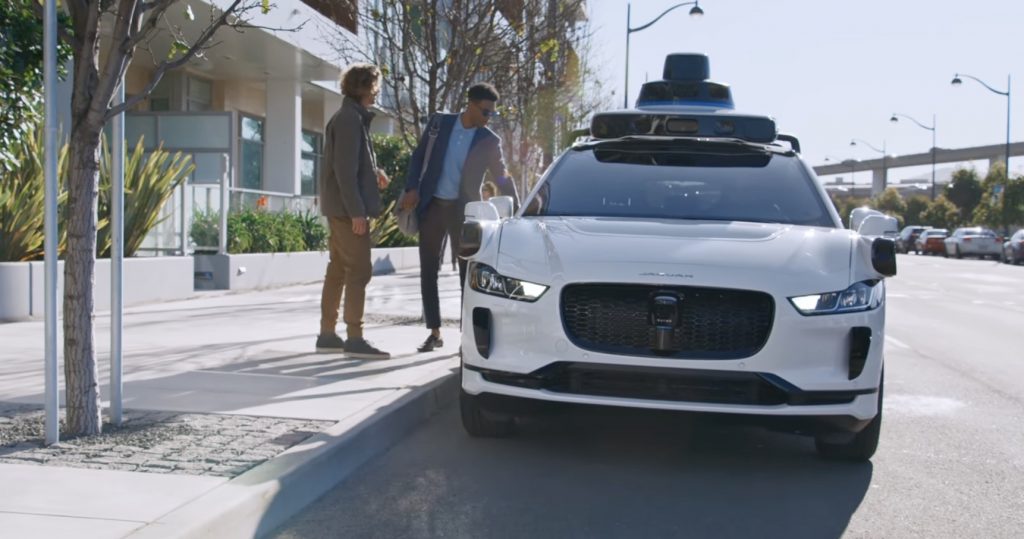
Last week, honking from robotaxis nearly caused a few San Francisco residents to move to another city. That repeated disturbance might have taken place about 4:00 am, which made it particularly frustrating for those trying to sleep.
It came from a parking lot full of Waymo autonomous SUVs parked near each other for customers hailing rides from these robotaxis. Waymo stated that the honking was the result of a safety feature triggered when a Waymo car detects another vehicle reversing toward it. The software was meant to prevent slow-moving crashes.
Several people who live in buildings near the parking lot have had similar complaints, according to an ABC News Chicago affiliate station.
Waymo and Cruise were approved to operate their paid robotaxi services 24/7 in San Francisco in August 2023. That decision was made by the California Public Utilities Commission (CPUC) in a 3-to-1 vote. Complaints and minor crashes have come up, with these permits being restricted for periods of time.
So when can we expect to see a lot of autonomous vehicles across the streets of America and other countries that are testing them out? That’s going to take at least until 2035, according to a prediction from research firm GlobalData.
“We expect the timelines for deploying fully autonomous vehicles (Level 5) to be pushed back over the next few years,” the research firm wrote in a report.
Level 5 autonomy relates to self-driving cars that do not require any human interaction – meaning that when they’re eventually deployed, they won’t have steering wheels or pedals; and what might be called fully self-driving vehicles.
Here Technologies, a Dutch company specialized in mapping technologies, location data, and related automotive services, found 2035 to be mentioned in more than one of these predictions as a realistic year to see it come together.
The Waymo One fleet consists entirely of fully electric Jaguar I-PACEs — what the company calls, “the world’s first premium electric autonomously driven vehicle.” The company is testing out Zeekr electric vans, made by a Chinese company. Cruise is using the Chevrolet Bolt, from its parent company General Motors, for its San Francisco robotaxi rides.
Waymo will this year test out colder locations, including Truckee, Calif.; Upstate New York; and Michigan, from the Upper Peninsula to the metro Detroit area. Winter road trips have been important to the company in recent years, with last year’s tests were done in Buffalo, N.Y.
Regardless of weather conditions, Waymo is testing rides outside of San Francisco and these cold locations. The company has been in limited parts of Phoenix since 2020, and is now testing its autonomous vehicles in Austin. Waymo has opened up a waitlist for access in Los Angeles.
Robotaxis are gaining ridership and support in San Francisco. For some riders, it’s better than taking an Uber or Lyft ride.
“I think the ride is great and I don’t feel unsafe or anything,” said said Nathan Herrara, a Boston resident who recently visited San Francisco. Herrera added that he absolutely trusts robot drivers more than humans. “They’re more cautious.”
China is taking the lead on autonomous vehicle testing, with at least 16 of its cities allowing companies to test self-driving vehicles on public roads. At least 19 Chinese automakers are their suppliers are getting in on the testing, according to Carnegie Mellon University, a hub for autonomous vehicle technology development.
Chinese autonomous vehicle company WeRide has been granted permission to test in California. The California Public Utilities Commission issued two permits to WeRide. I pilot permit including a driver and one not including a driver. Both allow the company to test its vehicles on public roads while carrying passengers.
The U.S. Commerce Department is considering a ban on Chinese connected vehicles, which includes self-driving vehicles, due to national security concerns. But WeRide believes in the market potential enough to look into a nearly $5 billion valuation when going public on the U.S. stock market. The capitalization costs are quite high for bringing in all the elements that go into building and operating a safe, dependable autonomous vehicle.
WeRide is testing out autonomous SUVs, vans, street sweepers, and a ‘robobus,’ which looks like a small shuttle bus.
And in other news………..
EV charging report: The U.S. Department of Energy’s (DOE’s) National Renewable Energy Laboratory (NREL) has released a study focusing on the U.S. challenge of building a widespread and reliable electric vehicle charging infrastructure. NREL’s 2030 National Charging Network: Estimating U.S. Light-Duty Demand for Electric Vehicle Charging Infrastructure report points to the need for a mix of publicly accessible charging stations along highways and near homes and workplaces, and private charging ports at single-family homes, apartments, and offices. “This is the fundamental challenge for the industry right now,” said Eric Wood, a senior EV charging infrastructure researcher at NREL. “Some people like to talk about alternative-fuel vehicles and their infrastructure as a chicken-and-egg problem. But I really think it’s more appropriate to think about infrastructure—specifically, charging stations—needing to lead the market. You need to have these stations be visible and available for people to feel confident in buying an electric vehicle and committing to make it their daily transportation mode of choice.”
CARB could boost LCFS: The California Air Resources Board is working on changes to the Low Carbon Fuel Standard (LCFS) that could boost credit prices and support renewable natural gas (RNG) investment, with implications for landfill and anaerobic digestion projects, according to Waste Dive. It would be an increase from a proposal released earlier this year, and it comes from listening to alternative fuel producers about the impact of LCFS credit prices having fallen too low. It will go before a CARB board vote in November. If it clears, it will mean that fuel producers will see increase in low-carbon alternatives to offset their petroleum-based fuels.



